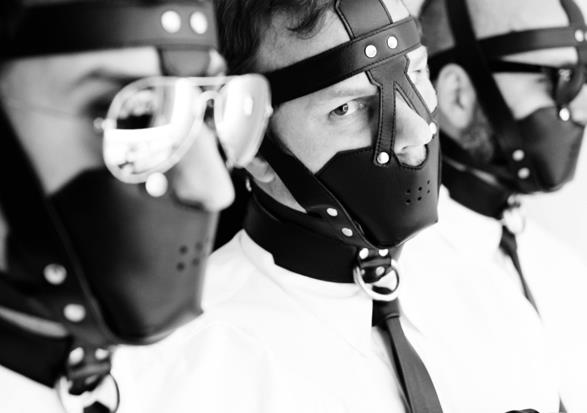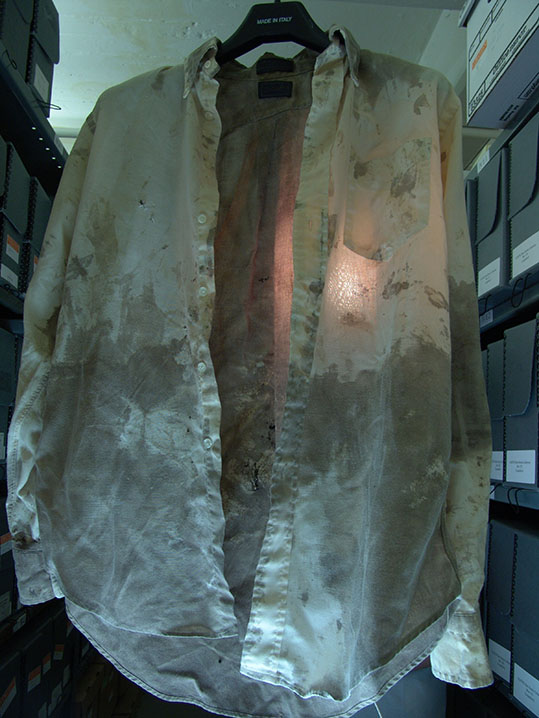Author | Greg Mania
Featured Image: Shower Curtain, 2004
Filmmaker, writer, advocate, and all-around virtuoso of queer culture, Leo Herrera is documenting and preserving the richness of a community’s history that is, more times than not, overlooked by the generation that’s achieved the ability to convey the most complex, equivocal human emotions in three emojis or less. The New York City-based visual artist has garnered over a half million hits from his art films and music videos, and has appeared in a slew of publications like The Huffington Post, Out, and i-D Fashion. His collaborations range over a global spectrum, all culminating in his effort to educate and tell the story of a bright future that we’re working so hard to create in the present, and honor those who paved the way for us in the past. I sat down with Leo to talk about his current projects and an array of issues that we should be taking a closer look at:
“The work that myself, and other fellow queer artists do, is to combat the losses resulting from assimilation that so many cultures in America have undergone.”
Tell me a little bit about your upbringing. What sparked your interest in queer anthropology and activism?
I grew up as a Mexican immigrant in Phoenix, Arizona—one of the most conservative places in America. There were only small pockets of gay culture a teen like me could access in the closet, but gay bookstores was one of them and early on I would learn about my sexual identity by reading about history. I was fascinated by other gay periods in America—the development of gay culture during WWII that lead up to Stonewall and the 70’s—so my first experiences being gay were through this prism of the past. After my move to San Francisco in my early 20’s with my gay brother, it became clear that the study of “gay” was my calling.

You’re a multifaceted creature with an array of skills in your creative arsenal! You’re a writer, filmmaker, and advocate—to name a few. How do you want to see your passions culminate in your career? What project have you had in the back of your mind that you want to come to fruition?
I’ve been working on a novel and film idea for about ten years now—it keeps evolving—especially as we experience so many political and medical advancements, but I think the project will eventually be a combination of all the things I love to do. It’s a gay science fiction piece and working on it takes up about half of my year every year.
The FDA’s latest proposed policy that restricts men from donating blood if they’ve had sex with another man in the last year is a prevalent issue on the LGBT community’s radar. Tell me a little bit about how “Blood Mirror” is a reaction to this. How did you become involved?
[Artist] Jordan Eagles recruited me back in August of 2014. This project was a two-year process for him and I jumped in halfway. We had to figure out the best way to tell this story, which was constantly evolving. I learned about the policy a long time ago, but it was honestly not something I gave much thought to. Like gays in the military, it was not an issue that I felt directly impacted by, and I think that is part of the issue of why this policy remained intact for so long. So many gay men just didn’t see how it related to them, and I can’t say I blame them. My original thought was, “If you don’t want my blood, then fine.” It wasn’t until learning about the policy itself that I started to understand just how damaging this was, that this was HIV stigma and homophobia in the purest sense.

This is an equality issue just as much as it is a health and science issue—especially when the technology to detect the HIV virus in a blood sample within nine days is available. How is this project combating the stigma surrounding HIV?
From a very young age, we have been taught to fear “gay blood” because it was believed to be inherently dirty, either from homophobia or the AIDS epidemic. This became so engrained that it infiltrated science and medicine and the blood ban sets such a bad, backwards example to the rest of the world. By shedding light that this continues to happen, it makes it very clear that one of the biggest battles we have is fighting HIV stigma, from outside and more importantly, from within our community.

It’s unequivocally clear “Blood Mirror” has attained viral status on the digital landscape. What is it about its medium that makes the message you’re trying to convey effective?
The Blood Mirror Film is able to convey the blood ban’s history, donation process, donor opinions, and resulting artwork in six minutes. I think people’s attention spans are much shorter, and they are constantly being distracted in the digital landscape, but I also think that people, especially younger generation, can consume data and information faster as a result, so the medium of a viral video is essential because, if done right, it can hit many emotional and intellectual notes in a short amount of time.
I think a lot of younger queer people, especially queer men, aren’t fully cognizant of the significance of the events in our community’s history (i.e., Stonewall, Matthew Shepard) that still strongly resonate with us today. How is your role critical in educating this generation and generations to come?
I feel the role of a “queer artist” is inherently as an educator and advocate because queer art has such a rich history of oppression, and more importantly, of flourishing within that oppression. It’s essential we keep that history passed down to one another, especially during a time when everyone is saying to the younger generation “You’re just like everyone else!”…That is a double-edged sword because it encourages the loss of culture and traditions that are solely queer. The work that myself, and other fellow queer artists do, is to combat the losses resulting from assimilation that so many cultures in America have undergone.
You’re currently working on the follow-up to your 2013 viral sensation “The Fortune Teller.” How has that been going for you? What are some challenges that come with making a follow-up to something has gained such popularity?
I followed-up “The Fortune Teller” with “3 Eras of Gay Sex in 3 Minutes,” which received three times as many views, probably because of the title. I’m in the stage where I’m wondering how to follow-up, and that’s a level of pressure that is daunting. “The Fortune Teller” and 3 Eras were really a time capsule for my older self, what I would like to remember about my youth and my history, so the process of each piece is very internal. During “The Fortune Teller” I felt a really strong need to show a different side of our history and 3 Eras came as a response to all of the controversy surrounding PrEP, the slut-shaming and confusion. The challenge will be picking a new theme for the next piece, but it will most likely follow a similar thread of history and pride.
What does the not-too-distant future have in store for you?
Each clip is taking me an average of six months to complete, and I’m looking for a December release next, so I have a little bit of time to brainstorm. For now, I’m going to take a short break and enjoy the beautiful east coast summer with all of my gay family!
For additional information please visit www.homochic.com.
